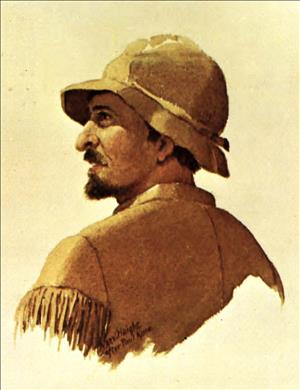On October 16, 1836, Dr. Marcus Whitman (1802-1847), a Presbyterian missionary and a physician, establishes a mission at Waiilatpu on the Walla Walla River. He chooses the site because of its proximity to the Cayuse tribe and to the Hudson's Bay Company post at Fort Walla Walla. Whitman will assist many wagon-train immigrants from the United States, but will convert few of the natives. In 1847, members of the Cayuse tribe will kill Whitman and 12 other whites at Waiilatpu.
In 1835, the American Board of Commissioners for Foreign Missions, an interdenominational missionary group, commissioned Whitman to found a mission for the tribes in the Oregon country. The board believed that the Native Americans yearned for the word of Christianity and funded the enterprise. Whitman was joined by Rev. Henry H. Spalding (1803-1874) and their wives Narcissa (Prentiss) Whitman (1808-1847) and Eliza Spalding (1807-1851). William H. Gray (1810-1881) accompanied the group as mechanic and farmer.
Whitman selected the site at Waiilatpu and Spalding selected a site at Lapwai. Whitman built a farm and a gristmill and provided medical care. He also conducted religious services. The first winter, the Whitmans received vital support from the Hudson's Bay Company and from Native Americans. But the response of the Native Americans to conversion was so dismal that in 1842, the missionary board planned to close the missions. Whitman made a dramatic journey during winter to Boston to plead to keep the missions open. While Whitman was in the East, some Indians burned the mill and Narcissa Whitman took refuge first at Fort Walla Walla and then with Methodist missionaries at The Dalles.
When Whitman returned, in September 1843, he came with a wagon train of about 800 emigrants. The mission became an important resting place for wagon trains on the Oregon Trail. The Whitmans cared for orphans whose parents died on the trail.
In 1847, both Marcus and Narcissa Whitman and 11 others were killed by Indians in what became known as the Whitman Massacre (a fourteenth victim apparently drowned after escaping the initial attack).

